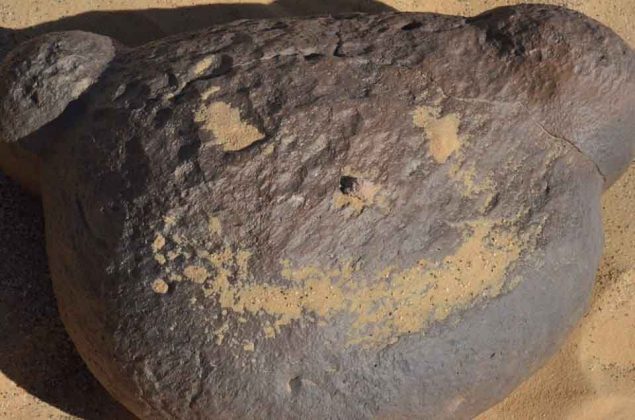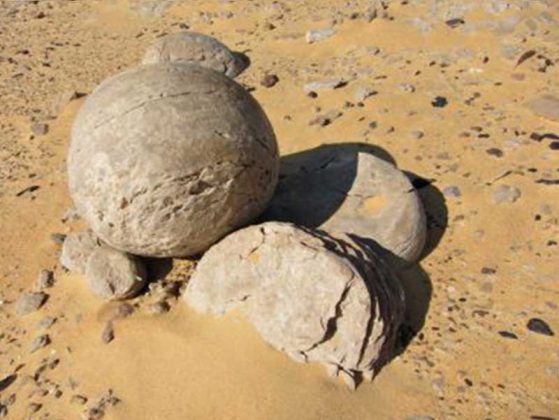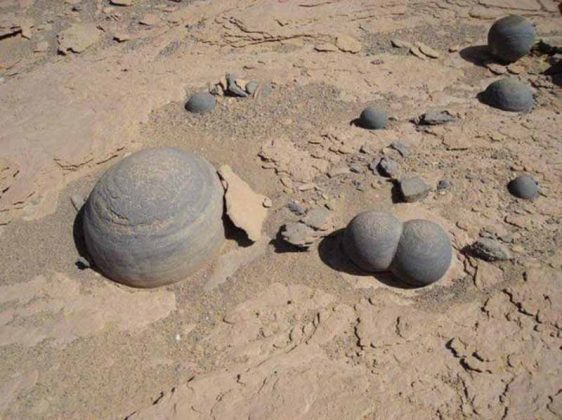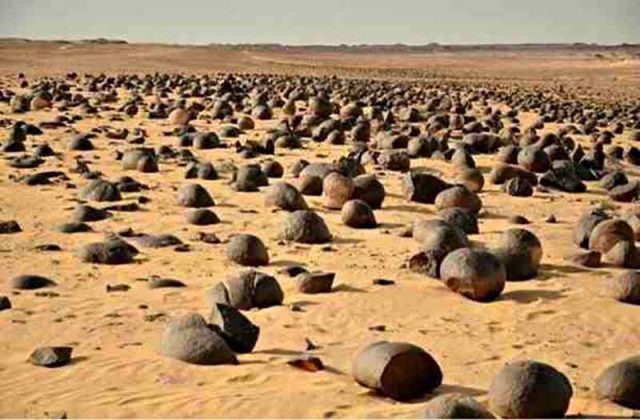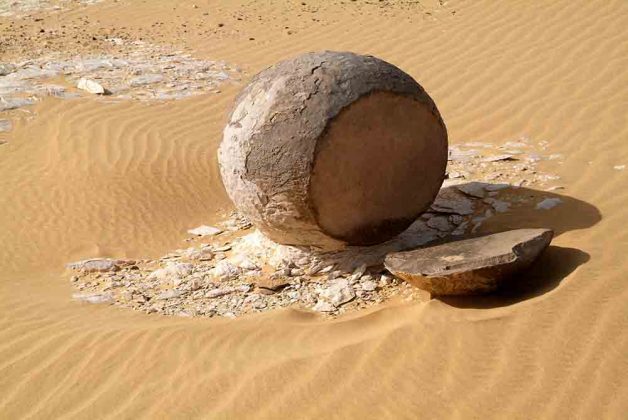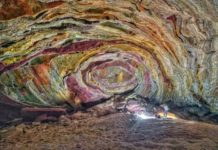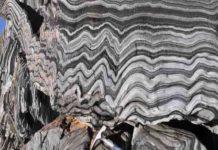
Name: Watermelon Valley “Wadi El Battikh”
Locality: New Valley Governorate, Egypt
Chert nodules of the Drunka Formation (Lower Eocene) are mostly spherical, have diameters from 40 to 120 cm, are quasi-uniformly spaced 2–3 m apart in the plane of bedding, have concentric internal structure and, except for rare small (<6 cm) solid chert nodules, are less than 85% chertified.
Nodules formed after moderate alteration of limestone by meteoric water at shallow (<100 m) burial depths; more extensive alteration of limestone by meteoric water followed nodule growth. Chertification was by low-temperature meteoric water at shallow burial depths.
Meteoric water may have invaded the Drunka Formation in association with shelf progradation during the Early Eocene, or during the development of a Middle Eocene unconformity. Replacement of carbonate mud by microcrystalline quartz was the dominant chertification process, but fossils were replaced in part by fine-grained equant megaquartz, quartzine and chalcedony; the last of these occurs in places as beekite. Opal A-secreting marine organisms are the inferred source of silica, but none are preserved.
There is no compelling evidence of an opal-CT precursor, so quartz may have formed by direct precipitation. Self-organization processes of enigmatic character established the spacing pattern of the nodules and also the Liesegang-banded internal structure of the chert nodules.
Nodules grew chiefly by diffusive supply of silica, although one locality has elongate nodules that grew when there was some porewater advection. Chertification patterns and δ18O values of both calcite and quartz indicate that nodule growth was complex and variable. Some nodules probably grew from the centre outwards. Many nodules, however, initially grew simultaneously across the entire nodule, but late-stage growth was predominantly at the outer margins or at selective internal sites.
Reference:
Origin of spheroidal chert nodules, Drunka Formation (Lower Eocene), Egypt. DOI: 10.1046/j.1365-3091.1999.00253.x




